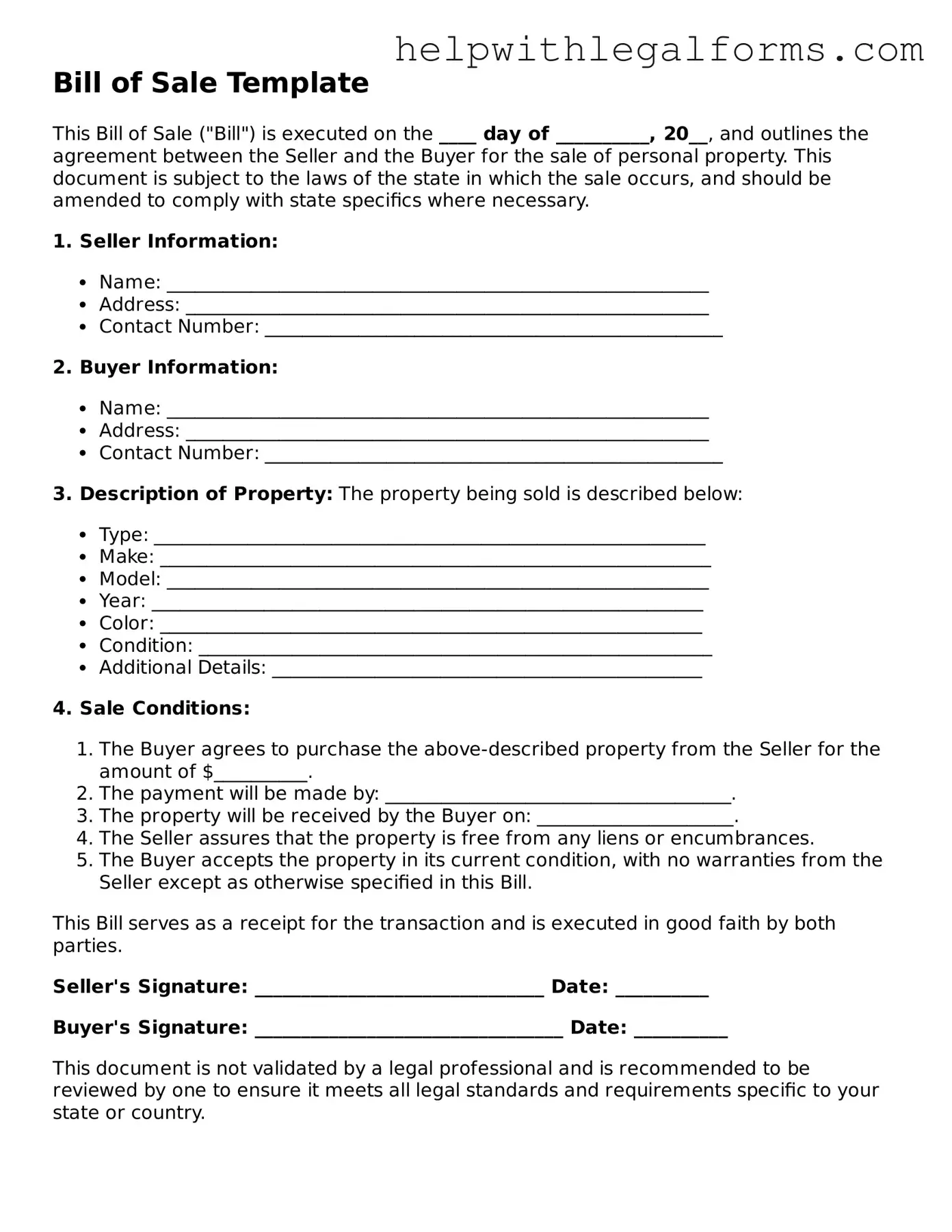What is a Bill of Sale form?
A Bill of Sale form is a legal document that records the transfer of ownership of an asset from a seller to a buyer. It serves as evidence that the seller has relinquished their rights to the asset, and the buyer has now assumed those rights. This form usually includes details such as a description of the item being sold, the sale price, and the names of the parties involved.
Why is a Bill of Sale important?
This document is crucial for several reasons. It provides a record of the transaction, which is helpful for tax, warranty, and insurance purposes. Moreover, it protects both buyer and seller by detailing the condition of the item at the time of sale, reducing the risk of future disputes.
Is a Bill of Sale legally required?
The requirement for a Bill of Sale varies by jurisdiction. In some areas, it is necessary for registering the purchase of a vehicle or a boat with the local authorities. Even when not legally mandated, it's considered good practice to complete a Bill of Sale for substantial transactions as it provides a legal record of the sale.
What information should be included in a Bill of Sale?
A comprehensive Bill of Sale should contain the full names and addresses of the seller and the buyer, a detailed description of the item sold including serial numbers or identification when applicable, the sale price, the sale date, and signatures of both parties. Conditions of the sale and any warranties or "as is" statement should also be explicitly mentioned.
Can a Bill of Sale be used for any type of item?
Yes, a Bill of Sale can be used for a wide range of items including but not limited to vehicles, boats, furniture, and electronics. It's versatile and can be adjusted to fit the specific details and conditions of almost any sale.
Does a Bill of Sale need to be notarized?
Whether notarization is required depends on the local laws and the type of item being sold. While not always a necessity, having the document notarized can add an extra layer of legal security and authenticity to the transaction.
What should I do after completing a Bill of Sale?
After the Bill of Sale is completed, both the buyer and seller should keep a copy for their records. If the item sold is registrable, like a vehicle, the buyer may need to present the Bill of Sale as part of the registration process. Additionally, it's advisable to check if any further steps are required under local laws to finalize the ownership transfer.
